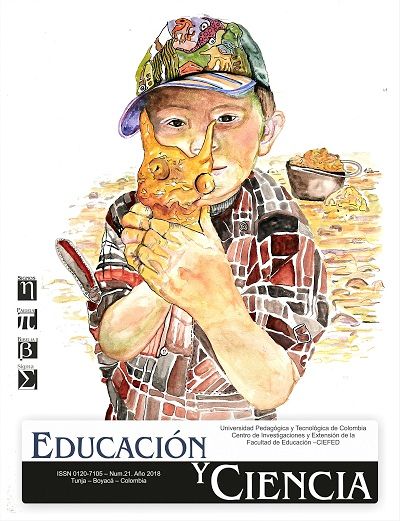Scope and limitations of learning by projects to develop critical thinking

Abstract
This article shows part of the result of the use of learning by projects, as a didactic strategy to develop critical thinking in natural sciences from the
execution of a classroom project with the students of the fifth and eighth grades of the Educational Institution “Joaquín González Camargo”. This
project was carried out under a qualitative approach, which allowed to review the initial level of critical thinking through a previous questionnaire, following the observation during the implementation of the strategy and the evaluation using the observation guide and the checklist. The group under study was
144 students, with whom, once the strategy was applied, it was established within the results that have a level of beginner thinker, being learning by
projects a useful strategy to encourage critical thinking, although there are aspects outside classroom practices that interfere with the process.
Keywords
Natural Sciences, critical thinking, learning
References
Elliott, J. (1993). El cambio educativo desde la investigación-acción. Madrid:
Ediciones Morata.
Galeana de la O, L. (2006). Aprendizaje basado en Proyectos. Investigación en
Educación a Distancia, Revista Digital. Universidad de Colima 0-17. Recuperado
de http://ceupromed.ucol.mx/revista/PdfArt/1/27.pdf.
Kemmis, S. (1984). Educational research is research for education. Australian
Educational Researcher, 11(1), 28-38.
Kemmis, S. (1989). Investigación acción. Enciclopedia internacional de la educación, 6,
3330-3337.
Lacueva, A. (2006). La enseñanza por proyectos: ¿mito o reto? En S. Campos
Olguín et al. (Comps.), Antología. Primer Taller de Actualización sobre los Programas
de Estudio 2006. Reforma de Educaicón Secundaria (pp. 15-22). Recuperado de
http://formacion.sigeyucatan.gob.mx/formacion/materiales/4/1/d2/p2/2.%20
La%20ensenanza%20por%20proyectos%20mito%20o%20reto.pdf
López, A. G. (2012). Pensamiento Crítico en el aula. Revista Docencia e Investigación,
México. (22), 41-60.
Martínez-Bernal, J., Sanabria-Rodríguez, L., & López-Vargas, O. (2016).
Relationships between learning achievement, self-monitoring, cognitive style,
andlearning stylein medical student. Praxis & Saber, 7(14), 141-164. http://
dx.doi.org/10.19053/22160159.5221
Orrego Noreña, J., & Toro González, L. (2014). Relaciones vitales: el aulacomo
escenario permanentede investigación. Praxis & Saber, 5(10). 121-139.
Recupedado de https://revistas.uptc.edu.co/revistas/index.php/praxis_
saber/article/view/3025/2740
Paul, R., & Elder, L. (2003). La mini-guía para el pensamiento crítico, conceptos y
herramientas. California: Fundación para el pensamiento crítico.
Rivas, S. F., & Saiz, C. (2012). Validación y propiedades psicométricas de la prueba
de pensamiento crítico. PENCRISAL. REMA, 17(1), 18-34.
Rudolf Tipp elt, H. L. (2001). El método de proyectos. El Salvador: Ministerio de
Educación Gobierno de El Salvador.
Saiz, C. (2008). Evaluación en pensamiento crítico: una propuesta para diferenciar formas
de pensar. Recuperado de http://www.pensamiento-critico.com/archivos/
evaluarpcergodf.pdf
Saiz, S. F. (2012). Validación y propiedades psicométricas de la prueba de
pensamiento crítico. Revista Electrónica de Metodología Aplicada, 17(1), 18-34.
Tipp elt, R., & Lindemann, H. (2001). El método de proyectos. El Salvador, München,
Berlín. Ministerio de Educación Gobierno de El Salvador.pp- 1-14) Recuperado de
http://www.uaa.mx/direcciones/dgdp/defaa/descargas/el_metodo_de_
proyectos.pdf
Torres, M. N. (2011). Influencia de las disposiciones en el desarrollo del
pensamiento crítico y el aprendizaje de ciencias naturales. Educar em revista,
(41) 247 -259. Recuperado de http://www.scielo.br/pdf/er/n41/16.pdf